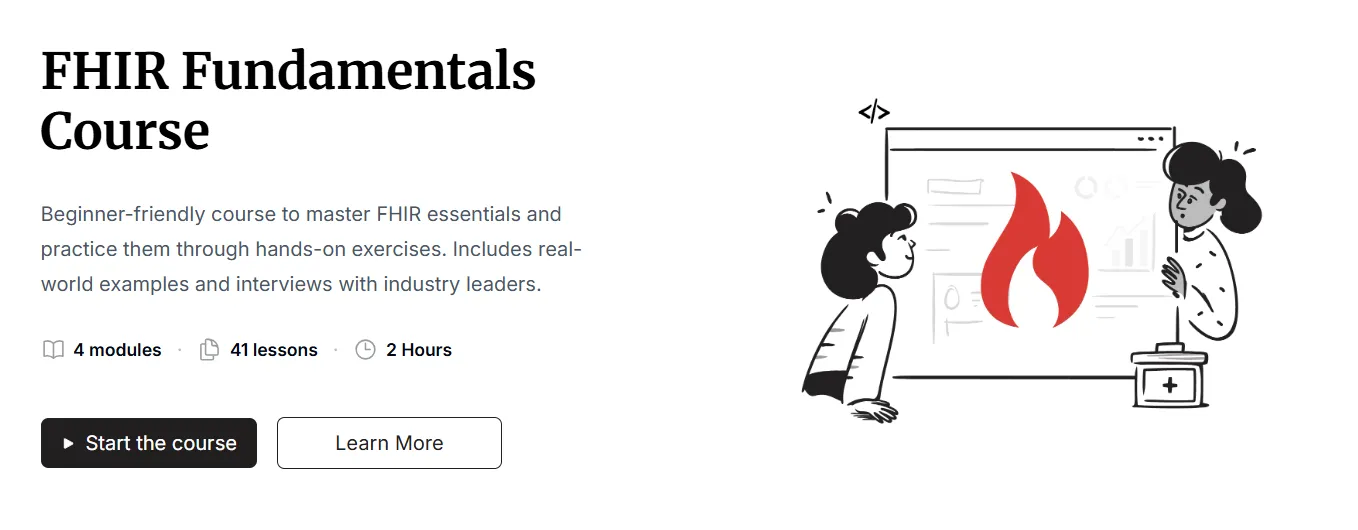Have you heard about FHIR and wondered how it’s actually being used and by who? Let’s explore how FHIR is being put to use in different parts of the world and how it’s helping to change the way healthcare systems connect.
United States: Enabling patient access
In the U.S., FHIR is part of the law. Healthcare providers are required by the 21st Century Cures Act Interoperability Rule to let patients access their medical records using FHIR-based APIs. This standardized approach, often called the API for Patient Access, makes it easier for apps to pull patient data directly from electronic health records (EHRs), giving people access to their own health information.
Popular apps like MyChart and OneRecord connect through these FHIR APIs, allowing patients to securely view and manage their health data in real time.
India: Hospital-to-hospital record sharing
In India, FHIR is being used a bit differently. Here, FHIR is mostly used to share documents between hospitals under the Ayushman Bharat Digital Mission (ABDM). So when you visit one hospital, your records can be securely sent to another through FHIR bundles using APIs. This helps make sure your medical information is consistent no matter where you go.
Saudi Arabia: Automating insurance approvals
In Saudi Arabia, they use a FHIR-based system called Nphies to speed up insurance pre-authorization. So, when a patient needs approval for treatment, hospitals send a FHIR message to the insurer and get quick electronic confirmation.
The U.S. is also adopting similar systems, making insurance processes quicker and more efficient.
If FHIR is new to you or you want a solid foundation, our FREE FHIR Fundamentals Course, it’s a great way to start and get up to speed.

Building EHRs on FHIR
While FHIR is most commonly used for sharing data, a small group of innovators are taking it a step further by building entire Electronic Health Record (EHR) systems using FHIR. This means they’re storing healthcare data directly in the FHIR format from the ground up.
Why is this important? Well, it separates the data from the apps that use it, which means different software tools can access the same standardized data. This makes managing and updating information much easier and more efficient.
To learn more about building and innovating with FHIR, check out our playlist for detailed videos and tutorials.
How FHIR Servers Enable Seamless EHR Development
FHIR servers, like Aidbox, make it easier for developers to build electronic health records (EHRs) and clinical applications on the FHIR standard. Aidbox provides a robust, FHIR-native PostgreSQL database designed to store healthcare data in JSONB format, ensuring secure and efficient management of FHIR resources.
With features like transactional operations, advanced reporting, and seamless migrations, Aidbox simplifies the complexities of healthcare data storage. It makes it easier for developers to build EHRs and clinical apps on FHIR, ensuring smoother interoperability and better performance.
Want to learn more? Watch this FHIR as a Database with AidBox to hear Health Samurai’s CTO, Nikolai Ryzhikov, share how they built one of the first FHIR-native platforms and why FHIR-first development matters.
Quick recap
FHIR is transforming how healthcare data is shared and managed, improving accessibility and efficiency across the globe. It’s helping streamline processes like patient access, hospital record sharing, and insurance approvals. As more organizations adopt FHIR, it’s shaping the future of healthcare technology.